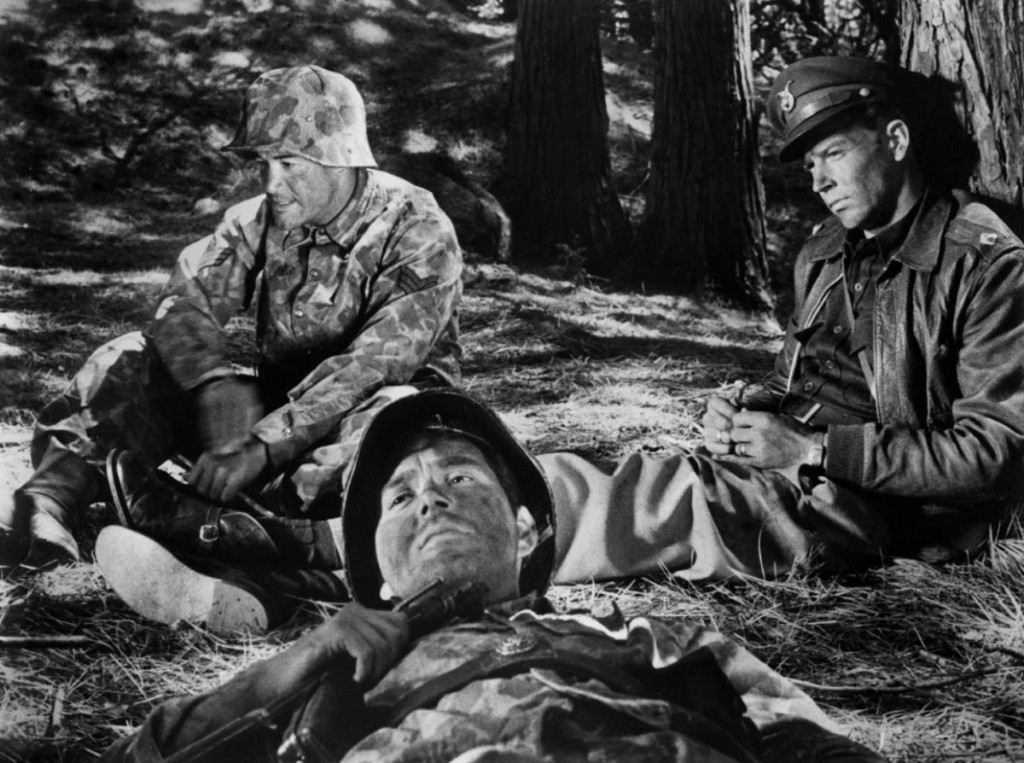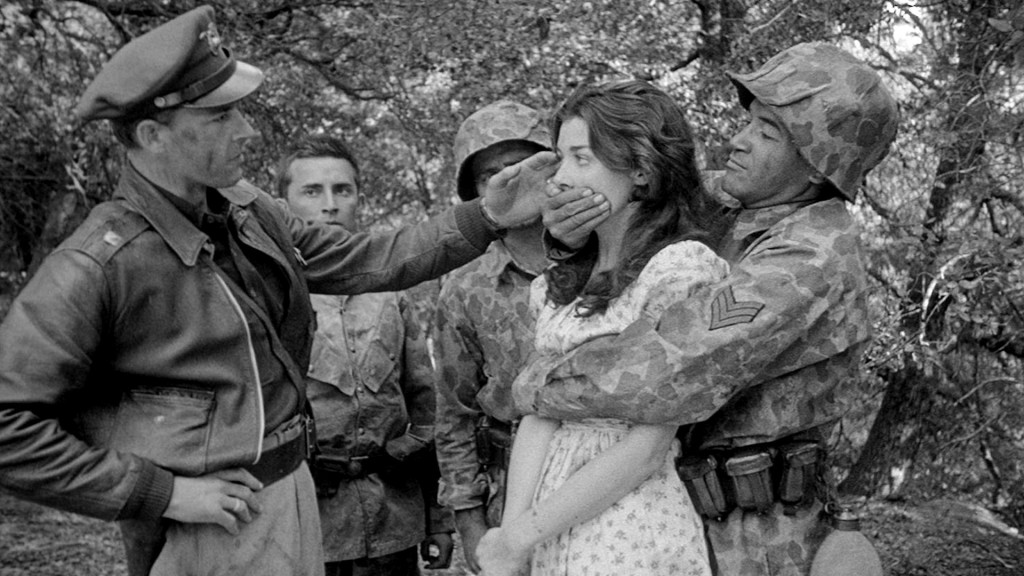Ria Kim or @tattooist_kimria as you might know her, tattoos adorable pet tattoos at Sol Tattoo Studio in Seoul, Korea. We chatted to her about her tattoo collection and the tiny tattoos she creates…

What inspired you to become a tattoo artist? How did you become an artist? I actually majored in design, but always dreamed of a career in drawing. However, the reality was tough and I ended up getting a job in a field that’s totally unrelated to drawing. Then I became interested in being a tattoo artist.
The idea that someone will have my drawing on their body for the rest of their life seemed very attractive and I decided to pursue being a tattoo artist. Looking back, it was the right choice. The only thing I regret is not doing it sooner.
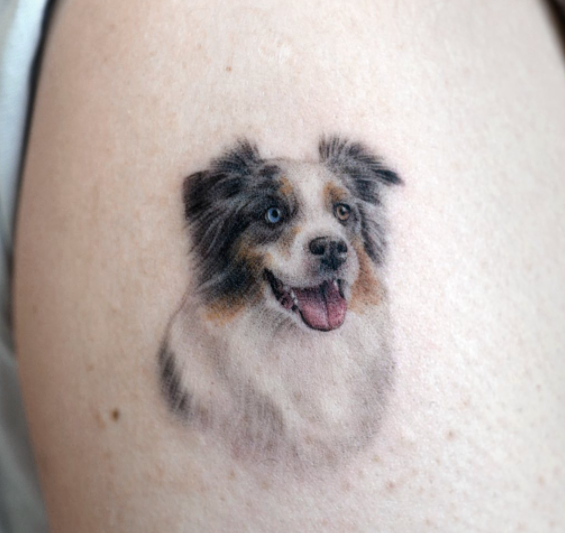
Have you always tattooed like you do now? I didn’t start with micro tattooing. When I started my technique was limited. I was doing less detailed and more rough styled work. My subject matter wasn’t pets either.
As I gained more experience, my drawings became smaller and more detailed works were possible. That’s when I started focusing on pets.
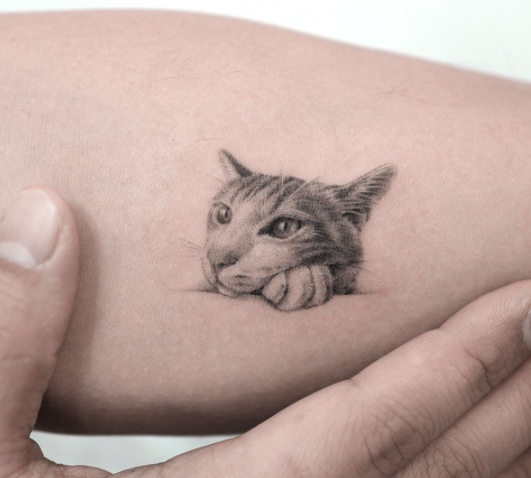
What attracted you to this type of tattooing? In the beginning I thought small tattoos had limitations, especially in what you could express in them. Like a lot of people I also had negative views on the colouration of micro tattooing. But it’s not like that all.
You use a very thin needle for micro tattoos, so you can still get those details and they’re very realistic. Also, thin needles allow the colour to penetrate deep and accurately into the skin, so as long as the artist has the right skills, the colouration is not a problem. The more I do micro tattoos, the more I seem to overcome prejudices and limitations. It’s such an attractive genre.
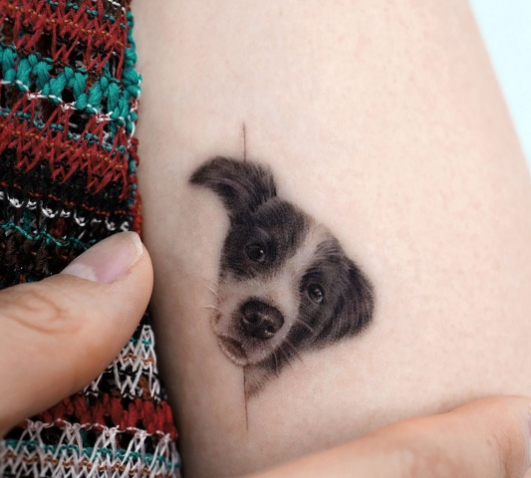
Can you tell us about the process behind your tattoos? Most of my clients come to have their dog or cat tattooed, so communication is very important. From choosing the photo they like to sharing stories of their pet, having their precious family member tattooed means a lot to me as well, so we talk a lot.
You do really cute small tattoos, why do you think small tattoos are so popular? Smaller tattoos tend to be more popular among the younger clients. The younger generation see tattoo as an accessory, so I think they just want a piece they like and have it placed on their body without it being too serious.
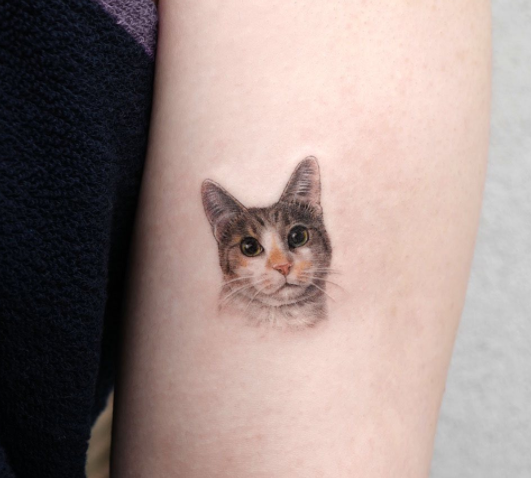
Are there any challenges when doing tiny tattoos? Of course. Tattoos are different from drawing on paper, so I must be very thorough and I do feel the pressure. Tattoos change over time with your body, so I need to keep that in mind. The size of the piece matters as well. The appropriate size varies from person to person because everyone’s skin is different.
I always communicate with clients to figure those out. That means, sometimes having to persuade clients to change their design when they ask for tattoos that are too small for their preferred spot or skin type.
What inspires you? I get inspired by my client’s stories. I work on the pieces as I recall what they told me about their cats and dogs during the consultation. I feel so many emotions especially when I’m drawing their eyes.
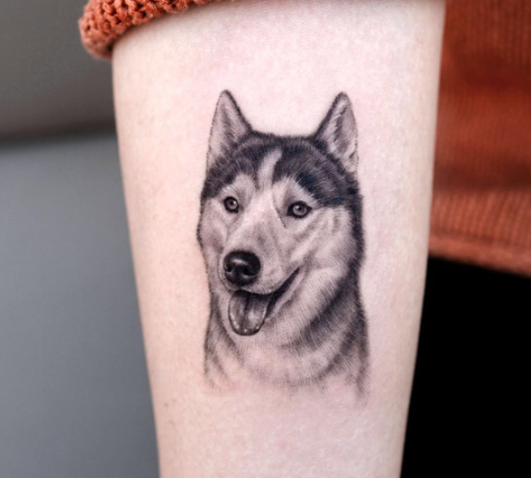
What do you like to tattoo and what would you like to do more of? I’ve been specialising in pets so far and I love this theme, so I want to continue to grow within it. My clients come to me from all over the world and if I had the chance I’d love to meet them and their pets in their homes. I also want to write a book by weaving their stories with my drawings.
Do you prefer to work in black and grey or colour? I prefer black and grey. It’s always interesting how a black ink alone can be used to express so much depth and various tones.
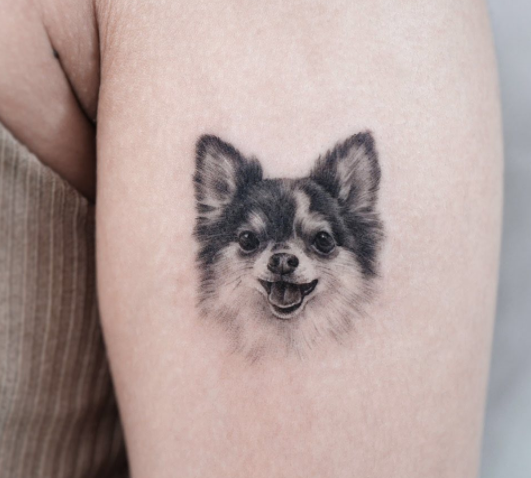
Can you tell us about your own tattoos? Are you a tattoo collector? I have lots of tattoos, I’d say about 15 to 20. My first tattoo was done by me. When I first started learning how to tattoo, I was curious about what it would feel like to get tattooed, so I did one on my arm. It wasn’t all that pleasant!
My second tattoo was for my birthday. I had one done by one of my favourite tattoo artists, @Oozy_tattoo. My very recent tattoo is of my precious dog, done by my teacher, @Soltattoo. I love all the tattoos on my body, but the one from Soltattoo is my favourite one.
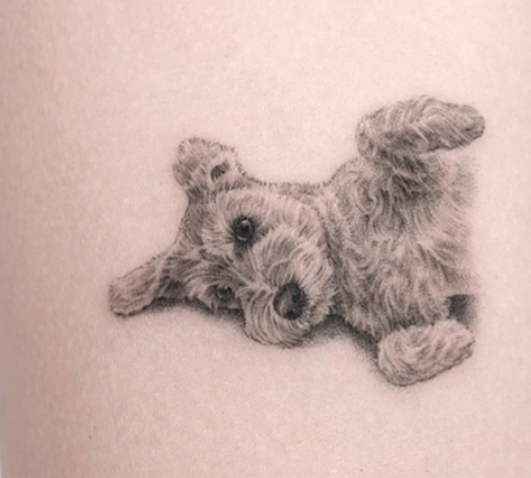
What is the tattoo scene like where you are? The tattoo scene in Korea has progressed so much. Korean tattoo artists are so talented that they are said to be the best in the world. Before COVID-19, 80% of my clients were from overseas. That means all those people decided to come to Korea so that they can get tattooed by a Korean artist.
Moreover, Korean tattoo artists develop and produce needles and tatoo machines on their own. They are amazing quality and I also mainly use needles and machines made by Korean tattoo artists.

What moment in your career are you most proud of? I usually tattoo pets and my clients visit me to remember them. As I’m tattooing, the client and I talk a lot of about their relationship with their pets. We share a lot of feelings and emotions and it seems to go beyond the simple relationship between clients and artists.
When I hear that my work has consoled them, it makes me think that I’ve made the right choice by choosing this job. In these moments I feel the great power of the cute little tattoos I draw and I become very proud of myself. I want to continue to comfort and give precious memories to my clients.
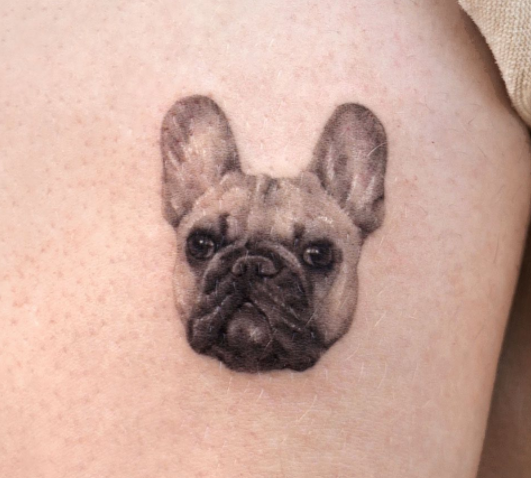
How have you been affected by the pandemic? As I mentioned before COVID-19 80% of my clients were from overseas. They would contact me months before visiting Korea to get a tattoo from me. It’s amazing and I always feel so thankful.
They tell me how incredible my work is and how much they love my work, and when it’s done, they leave with faces full of happiness. Some of them send me photos of my work with their pets once they return home. They’re such valuable experiences for me, don’t you think? I’ve also received a lot of invitations from overseas studios, but it saddens me that that I can’t move freely because of COVID-19. I pray that this situation will end soon.
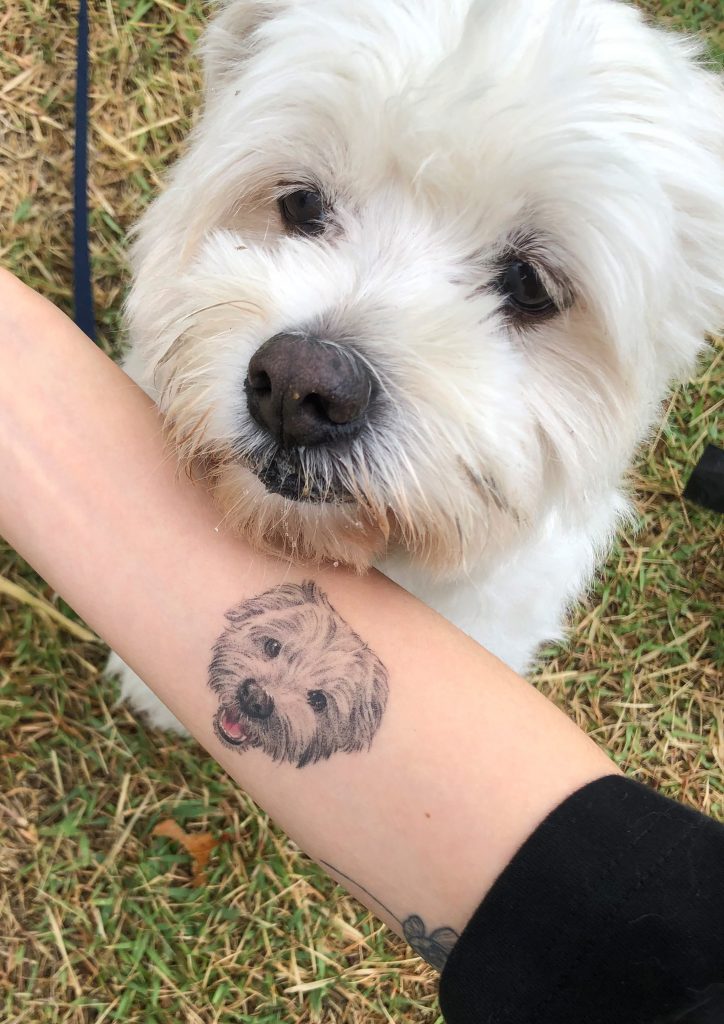
Finally are you a cat or dog person? I’m a dog person. I have a tattoo of my old friend on my arm. My friend’s name is Go Bok-su and he’s 13 years old.
Make sure to follow @tattooist_kimria for more pet portraits.
